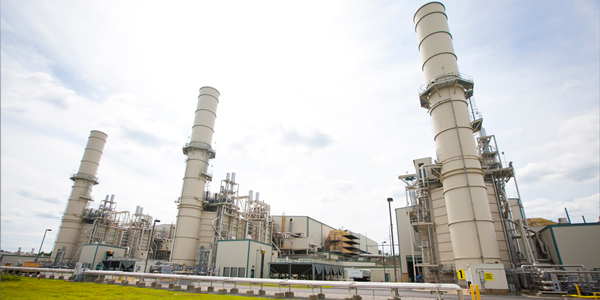By Rich Heidorn Jr.
The D.C. Circuit Court of Appeals on Friday rejected New England generators’ challenge to FERC orders on scarcity prices, saying the commission had properly considered their complaints (16-1023, 16-1024).
The New England Power Generators Association had asked the court to review two FERC orders related to ISO-NE’s scarcity pricing rules and the peak energy rent (PER) adjustment, which is used to claw back some revenues earned by capacity suppliers when prices in the real-time energy market are very high.
Adjustment Events
ISO-NE each day calculates a strike price set just above the marginal cost of the RTO’s most expensive generation. It also estimates PERs — essentially the difference between the real-time energy price and the strike price — for any hour in which the real-time price exceeds the strike price (“adjustment events,” the court called them).
The PER value is deducted from each capacity supplier’s monthly payments, regardless of whether it sold energy in the real-time market at the high price. NEPGA says most capacity suppliers clear their electricity offers in the day-ahead market, receiving the day-ahead market price, rather than the real-time price on which the adjustment is based.
The commission has acknowledged that this is a “potential inefficiency” and has approved elimination of the adjustment for the 2019/20 capacity commitment year.
Procedural Failure
The D.C. Circuit dismissed on procedural grounds NEPGA’s challenge to FERC’s May 2014 order rejecting a joint filing by ISO-NE and the New England Power Pool Participants Committee.
That “jump ball” filing contained two alternate proposals to address generator performance problems. The commission said neither proposal was sufficient alone, ordering ISO-NE to submit a modified version of its proposal along with increased scarcity prices suggested by NEPOOL (ER14-1050, EL14-52).
The D.C. Circuit said NEPGA lacked standing to seek review of the order because it had not previously sought rehearing from the commission.
Not Arbitrary or Capricious
The court did act on the merits of NEPGA’s complaint alleging that the interaction between the scarcity prices and the PER is unjust and unreasonable.
FERC said the group had not met its burden under Section 206 to prove that the existing Tariff provisions were unjust and unreasonable (EL15-25). The commission said NEPGA’s evidence — data from a Dec. 4, 2014, adjustment and a back-cast analysis — failed to consider the likelihood and size of future adjustments. It also said NEPGA did not address whether increases in day-ahead energy prices and capacity price floors might offset expected increases to the PER. (See FERC Denies Rehearings on ISO-NE Pay-for-Performance.)
The court said the commission’s rejection of the complaint was not arbitrary and capricious, noting that “because we are dealing here with technical and policy-based determinations, the commission’s judgment is entitled to judicial respect.”
Second Complaint
NEPGA said the court should overturn the commission’s rejection of its complaint because of the outcome of the group’s second complaint challenging the PER, filed in September 2016.
In that filing, NEPGA provided an additional 20 months of data in arguing that the PER had become unjust and unreasonable because of the increased scarcity rates.
The commission granted the complaint in part in January 2017 and set the case for hearing and settlement proceedings (EL16-120). (See ISO-NE Scarcity Rules Unfair to Generators, FERC Says.)
An uncontested settlement in that docket is pending before the commission. It would require ISO-NE to increase the daily PER strike price hourly based on the difference between actual five-minute reserve shadow prices and the pre-December 2014 scarcity prices for 30-minute operating reserves and 10-minute non-spinning reserves ($500/MWh and $850/MWh, respectively). The adjusted PER strike price would be effective Sept. 30, 2016, through May 31, 2018, when the PER is abolished.
“We note that any settlement would not fully moot this case because the second complaint proceeding has a refund effective date of Sept. 30, 2016, whereas the complaint in this case requested a refund effective date of Dec. 3, 2014,” the court said.




